Jeff Dunn is Executive Editor of Edumedia. He posted his version of technological devices that influenced classroom teaching and learning on April 18, 2011. Because of space, I have dropped some of the artifacts he included. There are, of course, many definitions of instructional technology; this one relies on devices and machines. Dunn’s evolution of technology, then, tracks the different devices used in classrooms. Another definition focuses on teacher use of the devices to advance learning in lessons. Even other definitions frame technology as processes, ways of organizing classrooms, schools, and districts. And on and on. The following series of devices with Dunn’s commentary, then, is just one way of seeing technology in its narrowest sense.
Classrooms have come a long way. There’s been an exponential growth in educational technology advancement over the past few years. From overhead projectors to iPads, it’s important to understand not only what’s coming next but also where it all started….
c. 1650 – The Horn-Book

Wooden paddles with printed lessons were popular in the colonial era…. On the paper there was usually the alphabet and a religious verse which children would copy to help them learn how to write.
c. 1850 – 1870 – Ferule

This is a pointer and also a corporal punishment device.
1870 – Magic Lantern

The precursor to a slide projector, the ‘magic lantern’ projected images printed on glass plates and showed them in darkened rooms to students. By the end of World War I, Chicago’s public school system had roughly 8,000 lantern slides.
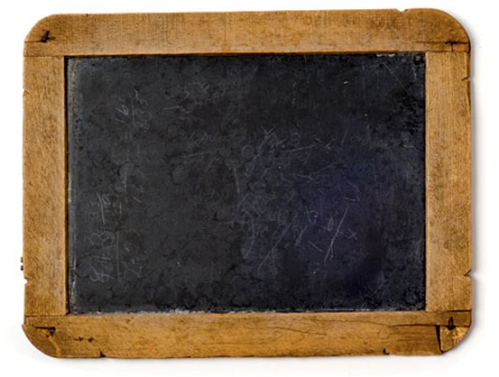 Used throughout the 19th century in nearly all classrooms, a Boston school superintendent in 1870 described the slate as being “if the result of the work should, at any time, be found infelicitous, a sponge will readily banish from the slate all disheartening recollections, and leave it free for new attempts.’
Used throughout the 19th century in nearly all classrooms, a Boston school superintendent in 1870 described the slate as being “if the result of the work should, at any time, be found infelicitous, a sponge will readily banish from the slate all disheartening recollections, and leave it free for new attempts.’
c. 1890 – Chalkboard
c. 1900 – Pencil
 Just like the chalkboard, the pencil is also found in basically all classrooms in the U.S. In the late 19th century, mass-produced paper and pencils became more readily available and pencils eventually replaced the school slate.
Just like the chalkboard, the pencil is also found in basically all classrooms in the U.S. In the late 19th century, mass-produced paper and pencils became more readily available and pencils eventually replaced the school slate.
c. 1905 – Stereoscope
 At the turn of the century, the Keystone View Company began to market stereoscopes which are basically three-dimensional viewing tools that were popular in homes as a source of entertainment. Keystone View Company marketed these stereoscopes to schools and created hundreds of images that were meant to be used to illustrate points made during lectures.
At the turn of the century, the Keystone View Company began to market stereoscopes which are basically three-dimensional viewing tools that were popular in homes as a source of entertainment. Keystone View Company marketed these stereoscopes to schools and created hundreds of images that were meant to be used to illustrate points made during lectures.
c. 1925 – Film Projector
 Similar to the motion-picture projector, Thomas Edison predicted that, thanks to the invention of projected images, “books will soon be obsolete in schools. Scholars will soon be instructed through the eye.”
Similar to the motion-picture projector, Thomas Edison predicted that, thanks to the invention of projected images, “books will soon be obsolete in schools. Scholars will soon be instructed through the eye.”
c. 1925 – Radio
 New York City’s Board of Education was actually the first organization to send lessons to schools through a radio station. Over the next couple of decades, “schools of the air” began broadcasting programs to millions of American students.
New York City’s Board of Education was actually the first organization to send lessons to schools through a radio station. Over the next couple of decades, “schools of the air” began broadcasting programs to millions of American students.
c. 1930 – Overhead Projector

Initially used by the U.S. military for training purposes in World War II, overhead projectors quickly spread to schools and other organizations around the country.
c. 1940 – Ballpoint Pen
 While it was originally invented in 1888, it was not until 1940 that the ballpoint pen started to gain worldwide recognition as being a useful tool in the classroom and life in general. The first ballpoint pens went on sale at Gimbels department store in New York City on 29 October 1945 for US$9.75 each. This pen was widely known as the rocket in the U.S. into the late 1950s.
While it was originally invented in 1888, it was not until 1940 that the ballpoint pen started to gain worldwide recognition as being a useful tool in the classroom and life in general. The first ballpoint pens went on sale at Gimbels department store in New York City on 29 October 1945 for US$9.75 each. This pen was widely known as the rocket in the U.S. into the late 1950s.
c. 1940 – Mimeograph
 Surviving into the Xerox age, the mimeograph made copies by being hand-cranked. Makes you appreciate your current copier at least a little bit now, huh?
Surviving into the Xerox age, the mimeograph made copies by being hand-cranked. Makes you appreciate your current copier at least a little bit now, huh?
c. 1957 – Skinner Teaching Machine
 B. F. Skinner, a behavioral scientist, developed a series of devices that allowed a student to proceed at his or her own pace through a regimented program of instruction.
B. F. Skinner, a behavioral scientist, developed a series of devices that allowed a student to proceed at his or her own pace through a regimented program of instruction.
[See an unusual video of B.F. Skinner describing “machine teaching” in a four minute video. It is a rare video and worth the entire post to see it]
c. 1958 – Educational Television
By the early sixties, there were more than 50 channels of TV which included educational programming that aired across the country.
1965 – Filmstrip Viewer
[T]his filmstrip viewer is a simple way to allow individual students watch filmstrips at their own pace.
c. 1970 – The Hand-Held Calculator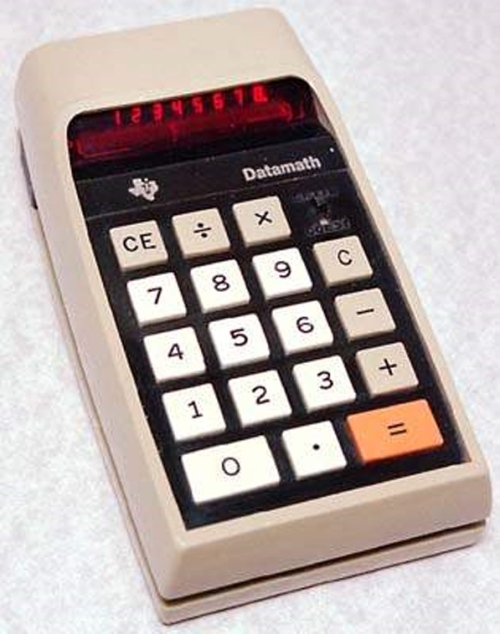
The predecessor of the much-loved and much-used [Texas Instrument] TI-83, this calculator paved the way for the calculators used today. There were initial concerns however as teachers were slow to adopt them for fear they would undermine the learning of basic skills.
1980 – Plato Computer
c. 1999 – Interactive Whiteboard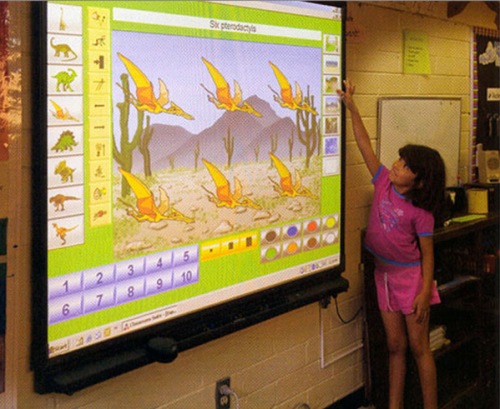
2005 – iClicker
2010 – Apple iPad
Perhaps your favorite device, past and present, was omitted from Dunn’s list. What’s missing? These are the mechanical and electronic devices, the artifacts in classrooms that future generations will marvel over but have little sense of why and how teachers used them. Excluded are the progressive and conservative pedagogies with which teachers used the devices, the software, and the organizations in which they were located.

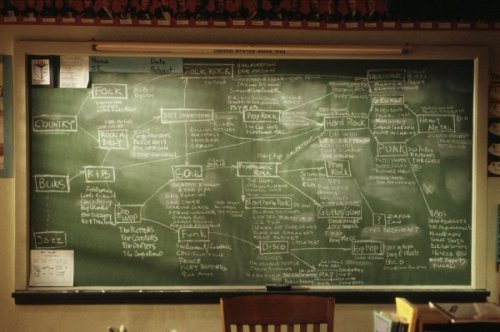
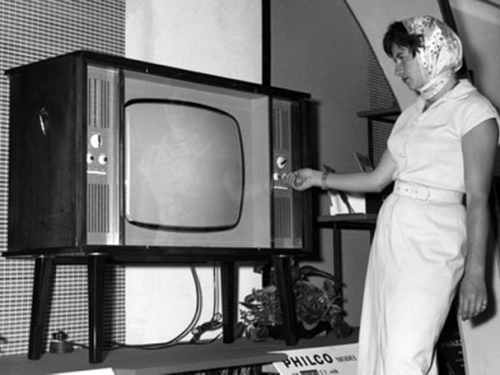

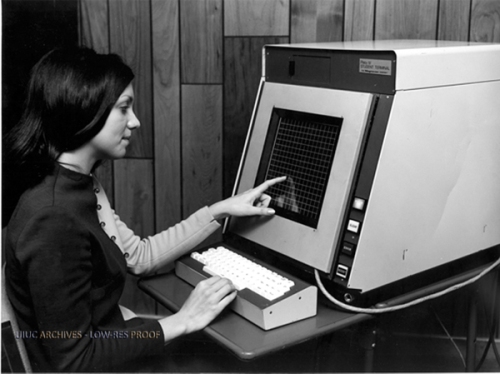
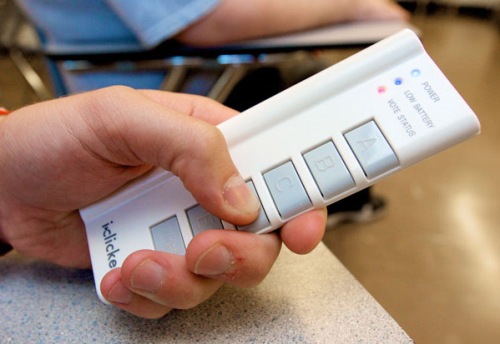
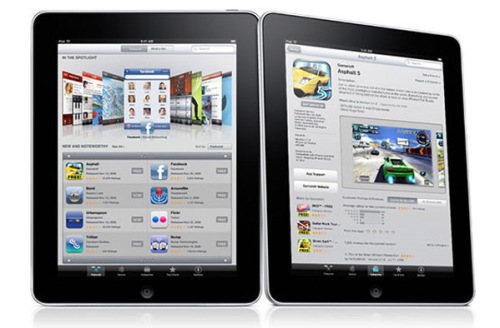
Pingback: The Best Sites For Learning About The History Of Technology | Larry Ferlazzo’s Websites of the Day…
Pingback: Evolution/History of Classroom Technology (Jeff Dunn) | greggfesta | Scoop.it
Pingback: Evolution of Classroom Technology | Office Environments Of The Future | Scoop.it
Why don’t teachers use technology in the classroom? Is the wrong question perhaps?
http://dmlcentral.net/blog/lyndsay-grant/role-tech-vs-purpose-education
Yes, it might be the wrong question to ask, Bob. Lacking the “social imagination” as Diana Rhoten suggests may offer a better answer–but not a better question.
Pingback: Evolution of Classroom Technology (Jeff Dunn) by Larry Cuban « juandon. Innovación y conocimiento
Great timeline! A key technology omitted from this list is the scantron machine, which I believe came on the scene circa 1970.
Yes, you are correct, Matt. Jeff Dunn had included it in his list of artifacts. I had dropped it and a few others (e.g.,first Reading Accelerator). Thanks.
I believe teachers are the masters of social imagination, however they are realists who know that regardless of the talk about technology use in the classroom it is just that, talk. Until schools are measured by student successes in “social imagination” instead of rote memorization, change is impossible.
Thanks for taking the time to comment, Johnnie.
The photocopier should also get a mention. I used a spirit duplicator when I started teaching 30 years ago. Photocopied worksheets and notes remain central to my working. The overhead projector and its evolutionary successor PowerPoint should also get a look in.
Paddy,
The overhead projector comes right after the radio and before the ball point pen in “Evolution of Classroom Technology.” Because of space I dropped the spirit duplicator–Jeff Dunn had it in his original listing. Including software would have jarred the treasure trove of hardware devices since the Horn Book but maybe for another post. Thank you for the comment.
My vote goes to the typewriter. The sound of the keys and the bell! Do you know there is an English teacher in Phoenix who lets students use typewriters if the want. I guess the past isn’t so past. (I think he has a blog called Magic Margin).
Yep, you are correct, Patrick. The English teacher is Ryan Adney and used 14 typewriters for a class project. Thanks for pointing me to the class. Article is at: http://www.statepress.com/2011/04/14/asu-alum-uses-typewriters-in-high-school-classroom/
Pingback: Ed Tech History | Larry Ferlazzo’s Websites of the Day…
Pingback: Evolution of Classroom Technology (Jeff Dunn) | 21st Century Learning KA | Scoop.it
Pingback: Jeff dunnm | Cellcon
Pingback: Evolución de la tecnología en el aula | TIC y educación | Scoop.it
I agree, the scantron should be added. Any teacher who wanted to survive in the 70’s and 80’s would have been lost without the reel-to-reel projector. That wasn’t included either, and should be!
Thanks for putting in another vote for the Scantron.
This was a great post! I posted a link to this blog in my own blog for grad school. Thanks you for the information and I’m sure you’ll get some of my classmates checking this out
Thanks for the comment.
Pingback: Traditional, Hybrid and Online classrooms « Integrate Technology Now
Pingback: EDTECH 504: Module 1 Reflection | Ron Gardiner: EDTECH Learning Log
Pingback: Edtech504 Reflection Module 1 | Kathryn Booth:EDTECH
What about the slide rule? It was pre-electronic calculator. I remember using them in school during the 1960’s. For a while we were allowed to use the slide rule during tests, but calculators were forbidden.
Yep, I would include slid rule.
Hello!
I would like to use your picture of the slate with the wooden border as a visual element in my online classroom on Canvas. Would this be permissible? It would be used primarily with one class of about thirty 5th graders, and would be completely password protected. Elements of the course may be shared with others, but not for the purpose of sharing the image. I can also put a note that the image is not to be used in the event of sharing. If you don’t own the rights the image, would you be able to direct me to who owns does? Thanks!
The photo is in the public domain. OK to use it.